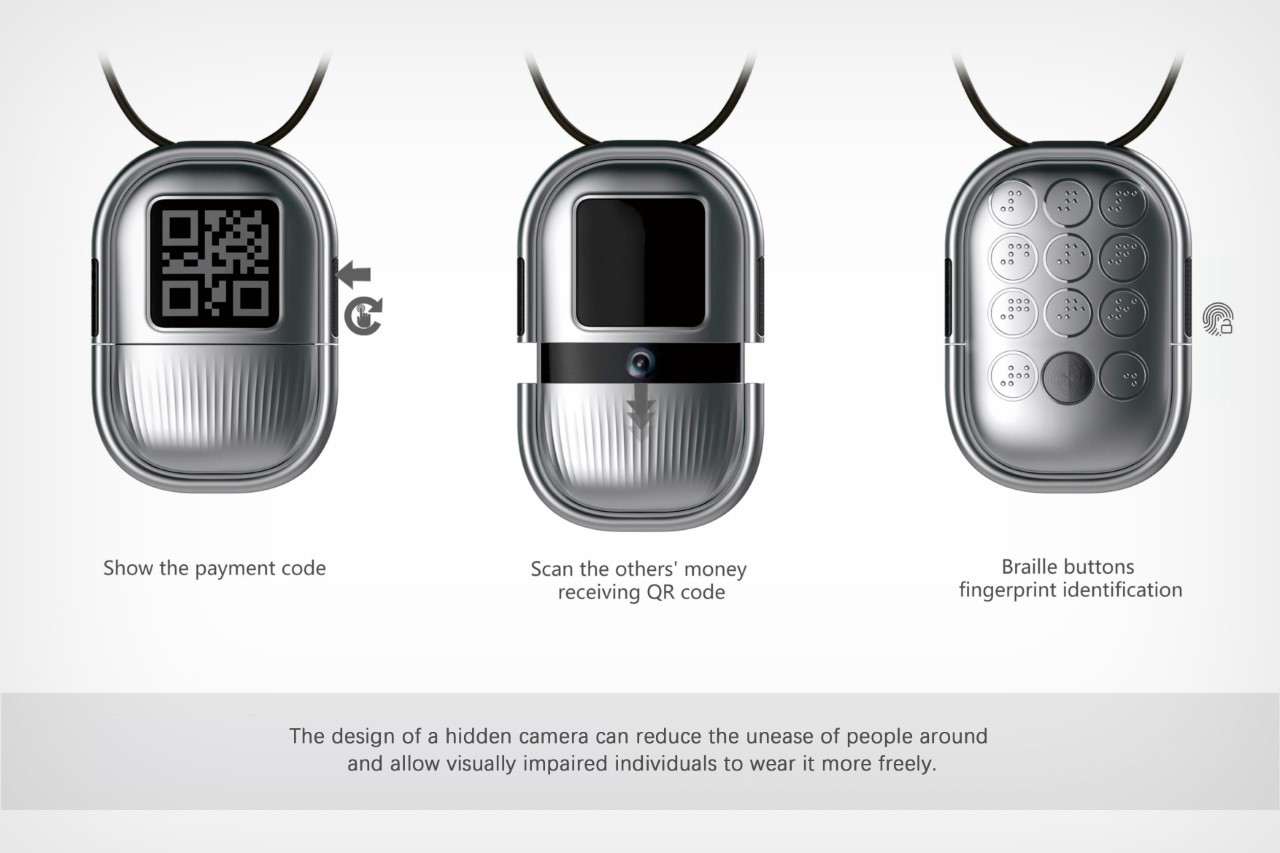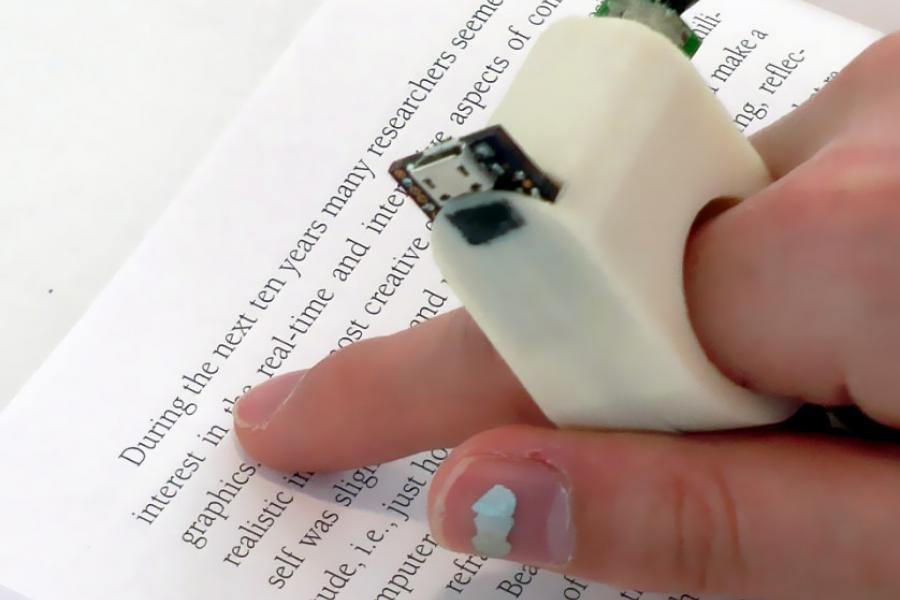An Overview to Life-altering Assistive Technology for the Blind and Visually Damaged
The improvement of assistive innovation has introduced a transformative age for individuals who are blind or visually impaired, offering devices that enhance freedom and improve day-to-day experiences. Advancements such as wise navigating devices and AI-driven applications are redefining how customers interact with their environments, while available analysis remedies and wise home innovations assure to more elevate the top quality of life. As these modern technologies proceed to develop, one have to consider not just their capabilities but additionally their influence on cultivating freedom and inclusivity. What does this mean for the future of access?
Smart Navigation Tools
Smart navigation devices are changing the method people that are blind or aesthetically impaired interact with their atmosphere. These innovative technologies, which integrate GPS, audio comments, and haptic signals, offer individuals with crucial info about their environments, enhancing their independence and movement.
One noticeable example is the usage of clever walking sticks furnished with sensing units that identify barriers and offer real-time comments with vibrations or audio signs. These tools permit users to browse complex environments, such as busy roads or crowded public rooms, with boosted self-confidence. In addition, wearable devices, such as wise glasses, are being created to assist in identifying faces, reviewing text, and recognizing objects, better enhancing the individual's spatial understanding.
Furthermore, smart navigating devices are significantly integrating artificial knowledge to assess data and adjust to users' preferences. This tailored approach not only improves navigation performance but also promotes a sense of empowerment among individuals. As modern technology remains to breakthrough, the possibility for wise navigation tools to develop an extra inclusive and easily accessible world for people that are aesthetically impaired or blind remains encouraging, eventually improving their everyday experiences and communications.
Cutting-edge Mobile Applications
Mobile applications are becoming effective tools for aiding individuals that are blind or visually impaired, supplying a variety of functionalities that boost daily living. These apps harness progressed innovation to help with everyday tasks, boost access, and advertise freedom.
One classification of innovative mobile apps focuses on aesthetic acknowledgment. Applications like Be My Eyes attach customers with sighted volunteers through video calls, enabling real-time aid for jobs such as reviewing labels or navigating unfamiliar atmospheres. In a similar way, applications like Seeing AI make use of expert system to describe environments, reviewed text, and identify things, supplying individuals with crucial details at their fingertips.
Another substantial location is navigation and positioning. Apps such as Aira and Neighboring Explorer provide audio support, assisting customers browse metropolitan rooms with simplicity. They offer customized support, permitting a more positive exploration of the setting.
Moreover, health and wellness and wellness apps satisfy certain requirements, such as medication monitoring and health and fitness tracking. These applications intend to foster an alternative approach to health, guaranteeing that users can maintain their health and wellness separately.
Wearable Assistive Tools
Wearable assistive gadgets stand for a considerable development in innovation developed to sustain people who are blind or aesthetically damaged. These tools boost movement and independence by offering real-time responses about the surrounding environment. Amongst one of the most remarkable wearable technologies are wise glasses geared up with cams and sensing units, which can identify challenges and relay essential info via sound cues.

One more cutting-edge option consists of wrist-worn tools that use ultrasonic waves to find challenges and give navigational aid. These tools often come with adjustable settings, allowing users to customize the notifies to their certain needs.
The integration of expert system in wearable assistive innovation is likewise significant, as it consistently boosts the accuracy and responsiveness of these tools. In general, wearable assistive devices are changing the lives of the aesthetically damaged and blind, cultivating higher freedom and boosting lifestyle through innovative remedies.
Easily Accessible Checking Out Solutions
Available analysis options play an important duty in allowing individuals who are visually impaired or blind to involve with text across numerous formats. These remedies include a variety of technologies and tools created to improve reading experiences, from traditional print materials to digital content.
One prominent option is Optical Character Recognition (OCR) technology, which transforms printed check here text right into digital style, permitting customers to listen to or read the material making use of display readers. In addition, specialized e-readers equipped with text-to-speech abilities use adjustable analysis experiences, allowing users to readjust font sizes and background colors for boosted visibility.
An additional efficient technique is braille screens, which provide responsive feedback by converting digital text right into braille. This enables individuals to check eyeglass shop out touch, fostering greater freedom and accessibility to literature. Mobile applications designed for checking out checked books or files can empower individuals with immediate access to a vast library of products (Smart glasses for the visually impaired).

Smart Home Technologies
Smart home modern technologies have actually revolutionized the way people that are visually impaired or blind communicate with their living environments, improving both self-reliance and safety and security. These innovative remedies leverage automation and connectivity to create an obtainable space customized to the demands of users.
Smart speakers and voice-activated aides offer hands-free control over various gadgets, allowing individuals to adjust safety and security, temperature level, and lights steps through easy voice commands. This performance minimizes reliance on sighted support and cultivates a feeling of autonomy. Furthermore, wise illumination systems can be personalized to deliver auditory feedback or tactile signs, allowing people to navigate their homes extra efficiently.
Moreover, security systems furnished with wise video cameras and sensors can send real-time alerts to customers, improving personal security without necessitating aesthetic confirmation. Automated door locks use assurance, permitting users to protect their homes effortlessly.
Incorporating smart home technologies not only improves daily living however also motivates social interaction through linked devices - Wearable technology for low vision. With ongoing improvements in assistive modern technology, the future appears promising, as even more options will arise to more encourage people that are blind or aesthetically impaired, making certain an extra inclusive and independent way of living
Conclusion
Finally, the innovations in assistive modern technology for the aesthetically impaired and blind stand for a significant leap toward enhancing independence and high quality of life. Smart navigating tools, innovative mobile applications, wearable tools, accessible reading solutions, and smart home technologies jointly foster an inclusive setting. This assimilation of technology not only improves flexibility and everyday living however also equips individuals to involve totally with their environments, advertising higher autonomy and engagement in culture.
Developments such as smart navigation devices and AI-driven applications are redefining just how customers communicate with their environments, while easily accessible analysis remedies and clever home technologies promise to further raise the quality of life. As innovation proceeds to breakthrough, the potential for clever navigation tools to create a more comprehensive and accessible globe for people that are visually impaired or blind stays appealing, ultimately improving their daily experiences and communications.
Wearable assistive devices stand for a substantial innovation in technology developed to sustain individuals who are blind or visually impaired. Amongst the look at this website most noteworthy wearable innovations are wise glasses outfitted with sensors and video cameras, which can recognize barriers and relay important information with sound signs.
Smart navigation devices, innovative mobile applications, wearable tools, easily accessible reading services, and wise home innovations collectively promote a comprehensive atmosphere.